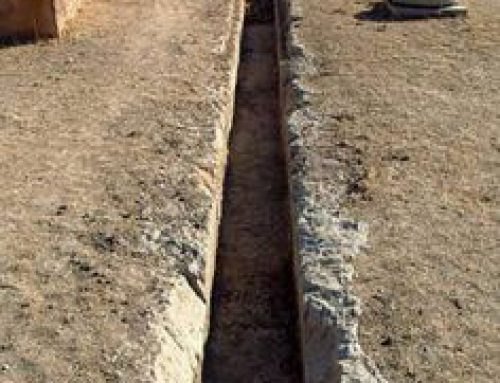
The first alphabet letters: the Canaanite alphabet
Early Canaanite alphabet
Each of the letters of the early Canaanite alphabet was the first sound of the most ordinary words in their language. The letter was a picture of that word’s meaning.
Who invented the alphabet?
Writing before the alphabet
Mesopotamian cuneiform
All our West Asia articles
Often you can still recognize that picture in our letters today. And the order of their letters is mostly unchanged today, too.
Aleph (A) from “Alp”, meaning “Ox”
Bet (B), meaning “House”
Gimel (C), from “Gam”, meaning “Foot”?
Daleth (D), meaning “Door”
He (E), meaning “Hey!”
Vav (F), meaning “Tent Peg”
Zayin (Z), from “Zan”, meaning “Hoe”?
Heth (H), meaning “Fence”
Thet (Th), meaning “Wheel”?
Yad (I), meaning “Hand”
Kap (K), meaning “Palm of Hand”
Lamedh (L), meaning “Shepherd’s Crook”
Mem (M), from “Mayim,” meaning “Water”
Nun (N), from “Nahash”?, meaning “Snake”
Sin? (X), meaning “Thorn”?
Ayin (O), meaning “Eye”
Peh (P), meaning “Mouth”
Tsade (Ts), meaning “Hook”?
Qoph (Q), meaning “Needle”
Resh (R), from “Rosh”, meaning “Head”
Shin, (Sh), meaning “Tooth”
Taw (T), meaning “Mark”
Suggested alphabet projects
Learn by doing: what can you figure out about how these people lived by the words they chose for their letters? Do you think the people making up the Canaanite alphabet were mostly men or mostly women? Why? What words would you use if you were making up alphabet signs? Write a coded message using your signs and see if other people can read it.
The Greek alphabet
The alphabet replaces cuneiform
The end of Egyptian hieroglyphs
Did you find out what you wanted to know about the Canaanite alphabet? Let us know in the comments! And check out these articles about the origins of the alphabet, about the Greek alphabet, and how the alphabet replaced cuneiform writing.




